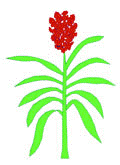International Sorghum and Millet Collaborative Research Support Program (INTSORMIL CRSP)
Date of this Version
12-2010
Document Type
Presentation
Citation
Presented at the Sorghum Food Enterprise and Technology Development in Southern Africa Workshop, in Lusaka, Zambia, December 6-9, 2010.
Abstract
In 1999 in Uganda we were faced with a static but highly competitive market.
Needed to grow our market and to do this we needed to make beer cheaper
It was felt that a suitable local ingredient would reduce the cost of manufacture and stimulate local agriculture and the economy as well as provide opportunities for growth and profit for the company.
An extensive base line study of the Ugandan agricultural sector was undertaken to determine what was “out there.”
It was clear that there was enormous potential but little else.
Sorghum seemed the logical starting point because there was a history of sorghum cultivation BUT the only suitable variety was in breeders seed!
Virtually no commercial agriculture.
Small scale sector was almost entirely subsistence based with virtually no support or “organisation”. Mistrust was pervasive, little skill, no finance.
Split the project into 4 (then 5) work streams: •Raw materials and agriculture •Technical brand development •Government and regulatory affairs •Marketing •Soon became clear that the “cheaper raw material” was a myth and that we would need another string to our bow.
Negotiations with Government on an excise remission on the back of investment in Agricultural Development at the grass roots level.
Took 18 months but was ultimately successful.
Meanwhile in the background the seed bulking work had been done and engagement with small scale farmers was ongoing in collaboration with the Ministry of Agriculture and the Agricultural Research Authorities who were enormously helpful.
A highly skeptical group of subsistence farmers planted a crop in the traditional manner using ox ploughs, hand tools, and family labor.
The development of the necessary brewing technology meanwhile went on at our R&D laboratories in Johannesburg and the infrastructure for this innovative product was designed and built at our brewery in Jinja.
A brand proposition was simultaneously developed to appeal to the target market using the “home grown provenance.”
The turning point came when I went out to the bush with a truck and a car full of cold hard cash which was paid out on the scale! •Suddenly EVERYONE WAS A FAN. Where previously mistrust and skepticism was the order of the day now I had to spend my time fighting off M.P.’s who “had supported me in the negotiations” and who had the perfect constituency for growing sorghum!!
The second crop was oversubscribed by 400%.
The brand became the market leader and an icon of national development.
Today Eagle or its derivatives have become established in 5 African markets and the brand continues to flourish.
The “model” has been adopted as “best practice” by SABMiller Global.
Importantly, the idea was driven by a business imperative, not philanthropy.
“The imperative for growth and profitability in a competitive market drove us to seek mechanisms for lowering the financial barriers to entry into the clear beer market thereby attracting new consumers to the category.”
PowerPoint format
Included in
Agricultural Economics Commons, Agronomy and Crop Sciences Commons, Marketing Commons, Other Food Science Commons



Comments
Copyright 2010, the author. Used by permission.